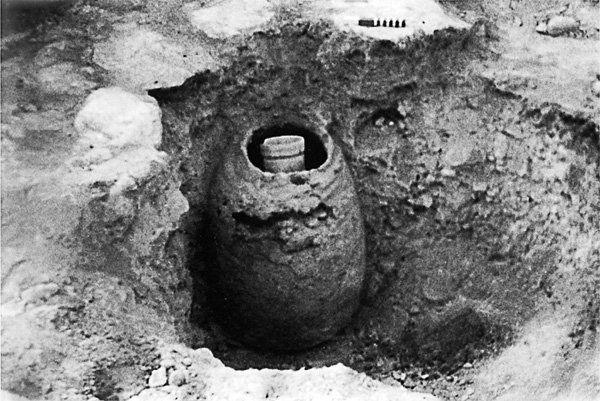A Toilet at Qumran
Sidebar to: Did the Essenes Write the Dead Sea Scrolls?

In an excavation area of Qumran called “Locus 51, ” Roland de Vaux, the Dominican Catholic priest who led the excavations at Qumran between 1951 and 1956, identified a feature that he interpreted as a toilet. It was located in the eastern part of one of the main buildings. While scholars today generally agree that the feature is indeed a toilet, there are differences of opinion as to how its presence should be interpreted.
The installation identified by de Vaux (and published in English by Jean-Baptiste Humbert and Alain Chambon of the École Biblique) consists of a terracotta pipe set into a bottomless receptacle made of unbaked clay that was surrounded with coarse dirt.1 This construction is consistent with similar toilet installations that existed elsewhere in the ancient Mediterranean.2 In the absence of public “luxury” latrines, which were used primarily by the ancient Romans and were constantly flushed with a stream of water running through canals built especially for this purpose, many private and public buildings had toilet installations such as this one. A seat made of wood or stone was built over a cesspit that contained the waste. In some cases, the cesspit was not dug directly underneath the toilet but rather connected to it by a pipe, through which water could be poured in order to flush away the sewage. These types of toilets were already present in the Levant and Egypt during the Late Bronze Age.
Already a library member? Log in here.
Institution user? Log in with your IP address.

